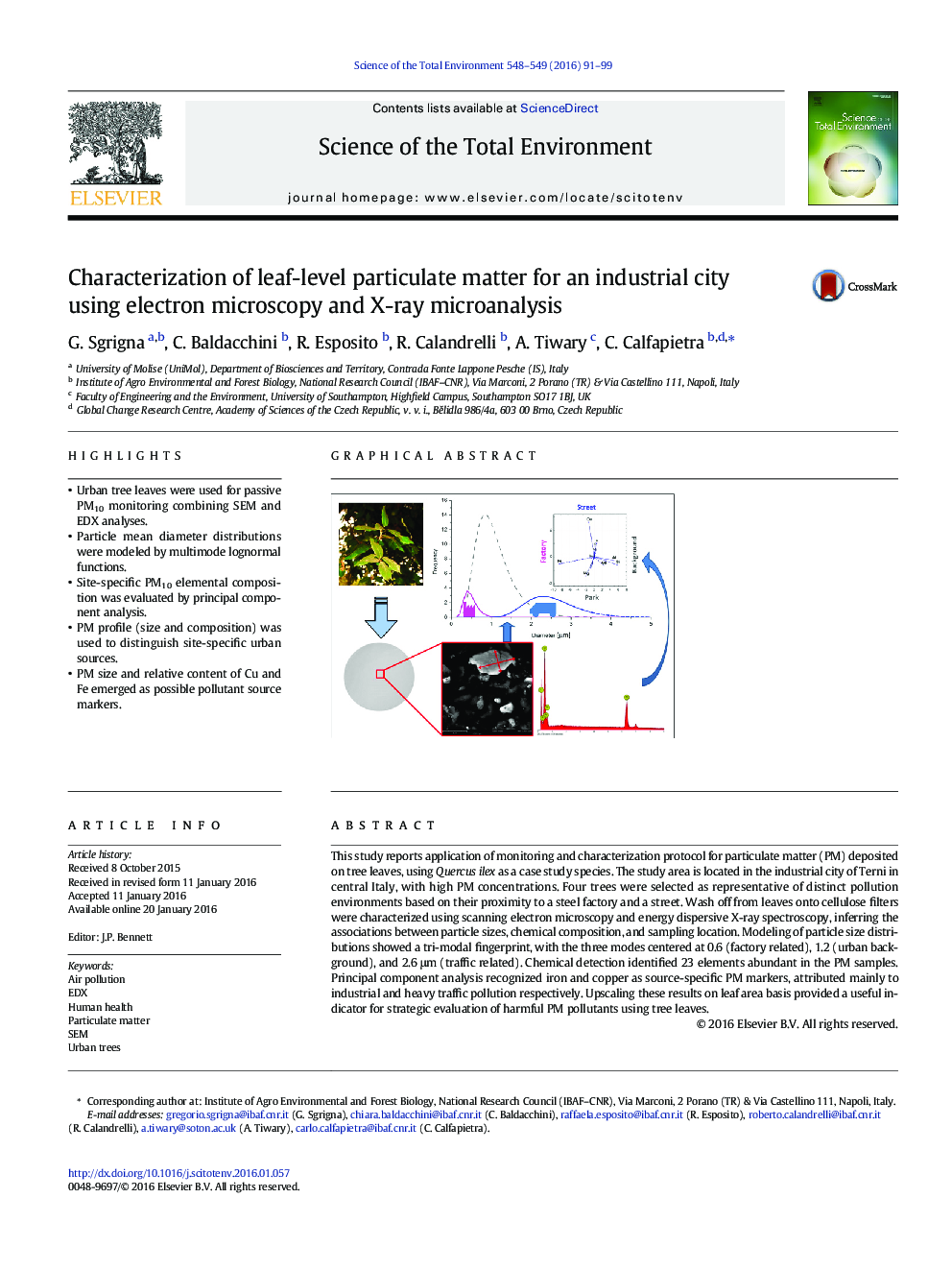| Article ID | Journal | Published Year | Pages | File Type |
|---|---|---|---|---|
| 6323304 | Science of The Total Environment | 2016 | 9 Pages |
â¢Urban tree leaves were used for passive PM10 monitoring combining SEM and EDX analyses.â¢Particle mean diameter distributions were modeled by multimode lognormal functions.â¢Site-specific PM10 elemental composition was evaluated by principal component analysis.â¢PM profile (size and composition) was used to distinguish site-specific urban sources.â¢PM size and relative content of Cu and Fe emerged as possible pollutant source markers.
This study reports application of monitoring and characterization protocol for particulate matter (PM) deposited on tree leaves, using Quercus ilex as a case study species. The study area is located in the industrial city of Terni in central Italy, with high PM concentrations. Four trees were selected as representative of distinct pollution environments based on their proximity to a steel factory and a street. Wash off from leaves onto cellulose filters were characterized using scanning electron microscopy and energy dispersive X-ray spectroscopy, inferring the associations between particle sizes, chemical composition, and sampling location. Modeling of particle size distributions showed a tri-modal fingerprint, with the three modes centered at 0.6 (factory related), 1.2 (urban background), and 2.6 μm (traffic related). Chemical detection identified 23 elements abundant in the PM samples. Principal component analysis recognized iron and copper as source-specific PM markers, attributed mainly to industrial and heavy traffic pollution respectively. Upscaling these results on leaf area basis provided a useful indicator for strategic evaluation of harmful PM pollutants using tree leaves.
Graphical abstractDownload high-res image (180KB)Download full-size image
